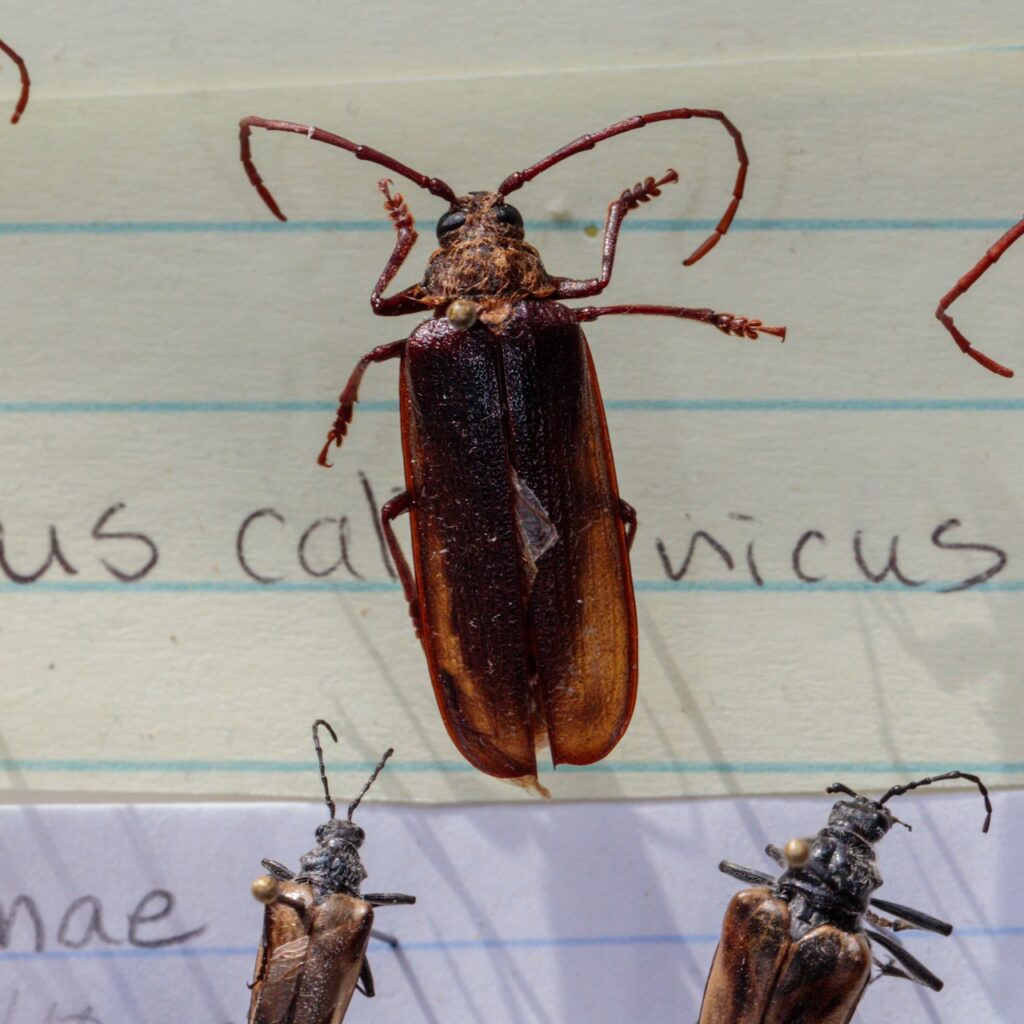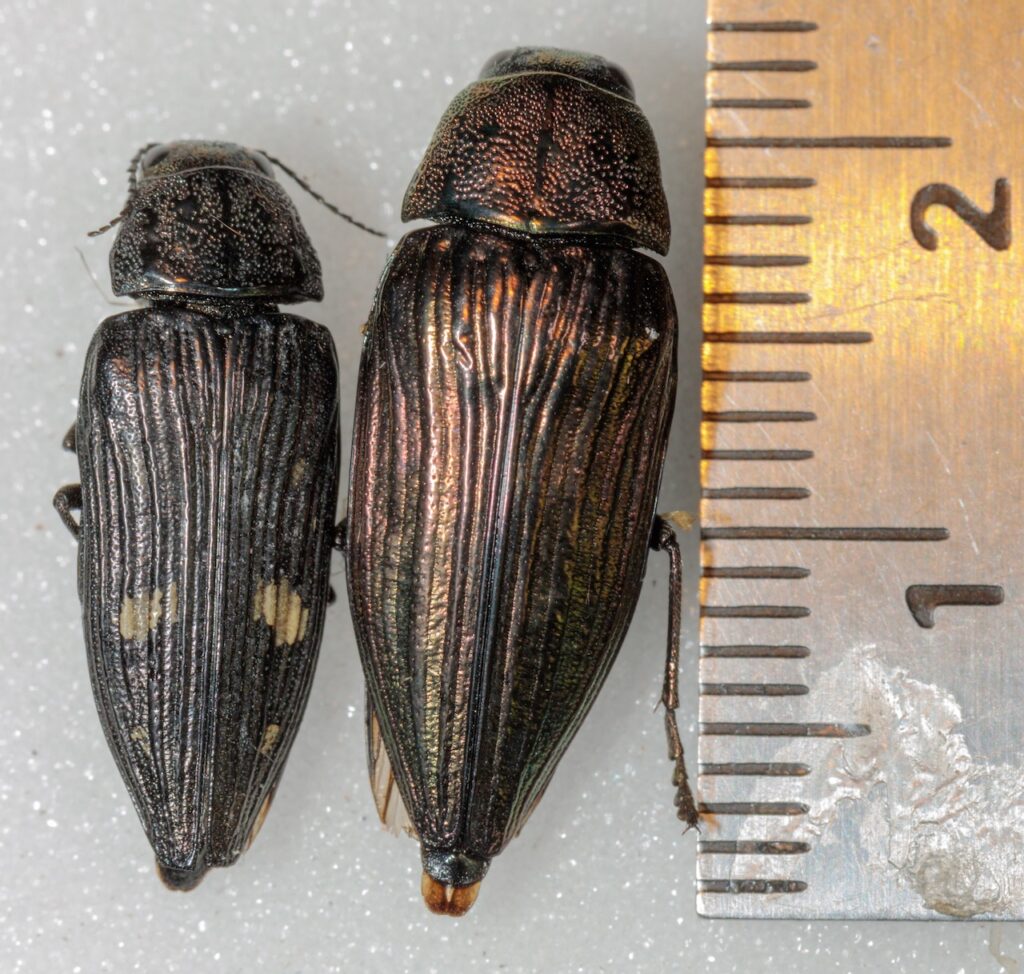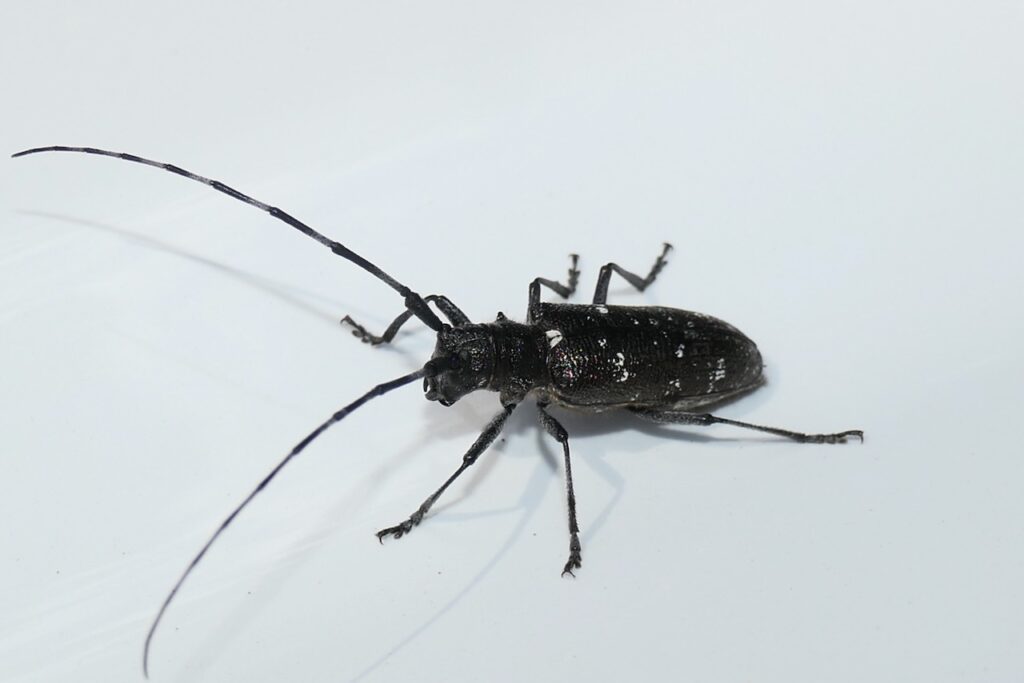
As climate chaos intensifies, B.C.’s forests are changing rapidly and not for the better as fires, drought, insects and diseases take their toll. Just one kilometre up our road there is an Old Growth Management Area where most of the mature and older Douglas fir trees managed to escape last year’s firestorm. Recently I noticed there are green insect traps hanging from branches there, that a local forester explained were part of a research project on longhorn beetles.
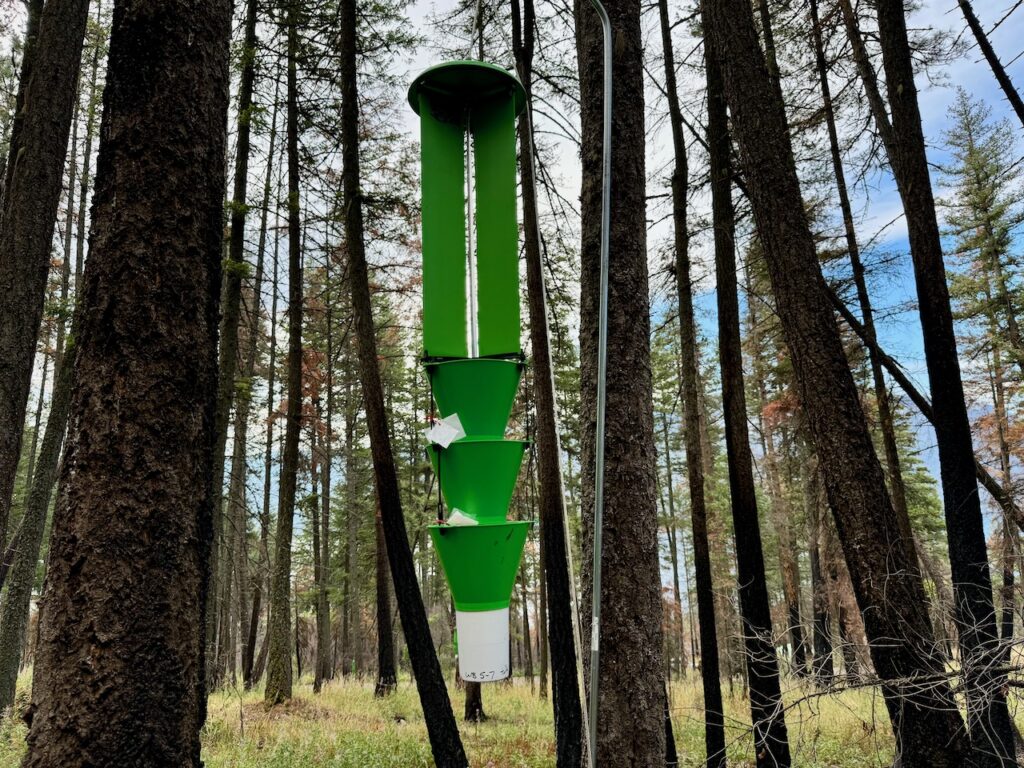
Fortunately, the Ministry of Forest Kamloops Region entomologist, Lorraine Maclauchlan was able to provide me with the details about her research project that involves trapping these insects at ten sites distributed throughout the Thompson Okanagan Region. She explained how a few years ago forestry staff from both here and the Kootenay Boundary Region began seeing woodborers attacking green Douglas-fir, Ponderosa pine, Larch and younger lodgepole pine trees.
Last year, Lorraine did a small trapping trial and this year, larger trials are underway in B.C.’s southern interior. They are using 12 combination panel-funnel traps at each site with various types of semiochemical compounds, including pheromones, to attract the beetles. Their goal is to determine which lure works best and to learn more about the diversity of the beetles in these damaged stands.
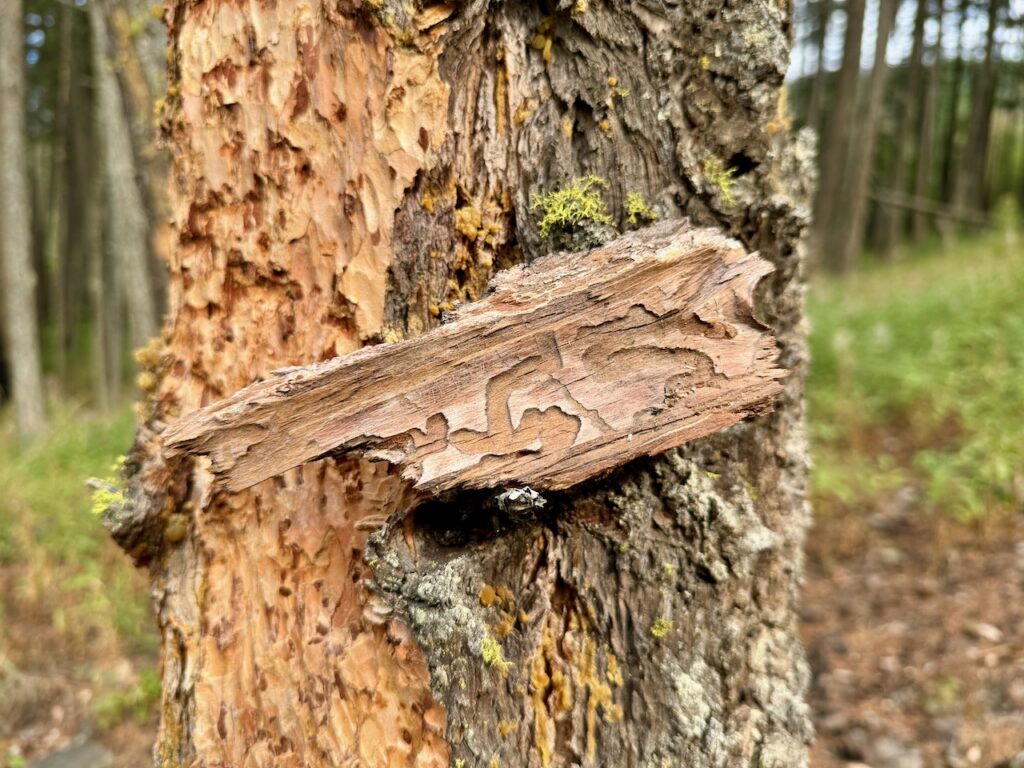
Typically, the most damaging insect outbreaks are caused by the various bark beetle species (mountain pine beetle, Douglas-fir beetle, spruce beetle and defoliators). Bark beetles bore under the bark creating egg galleries in the phloem-sapwood interface, where brood develop, and then new adults emerge. The trees die when the flow of water and nutrients is cut off by the mining of larvae in the phloem and a blue-stained fungi carried by the adult beetles then colonizes the wood.
Wood boring beetles are usually the next insect to move into the attacked or fire-damaged trees. The difference with wood borer is that eggs are laid in the bark and then the larvae move into the phloem often consuming (eating) bark beetle larvae that they encounter before boring deeper into the woody portion of trees. Typically, woodborer beetles do not infest and kill live trees although it does occur, but rather they infest the already attacked or recently killed trees, thus helping in the breakdown and decomposition of the fibre back to soil for successive forest growth.
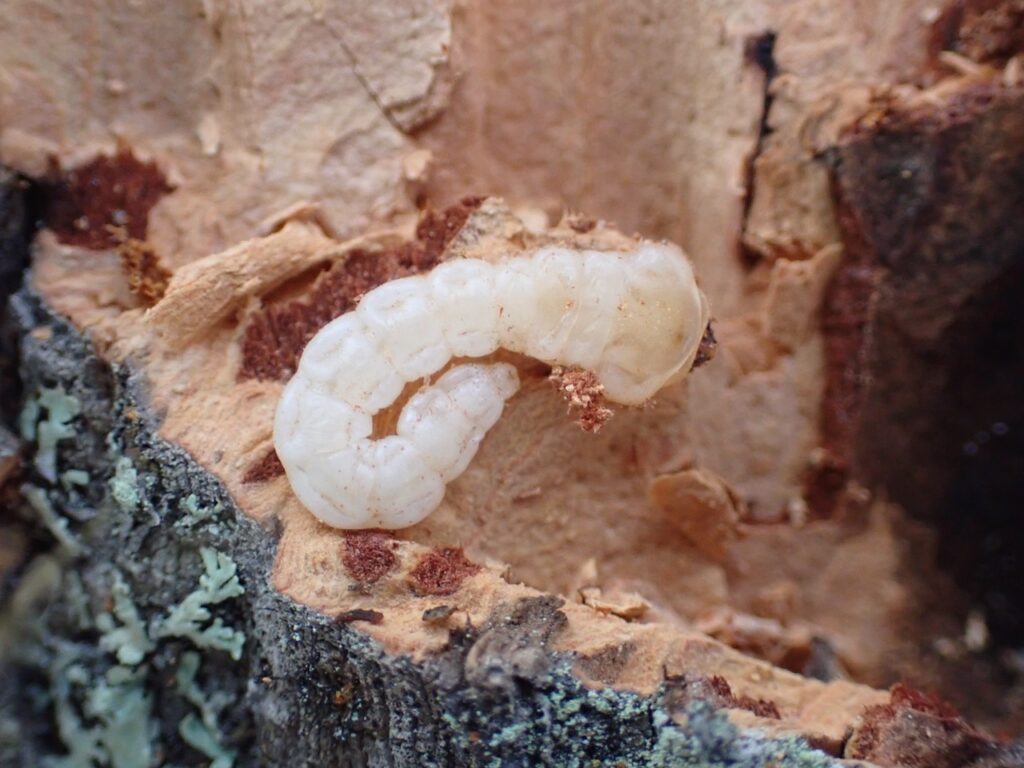
The woodborer beetle’s life cycle is dominated by the larval stage, which usually lasts one year but can extend to an additional year or two. Wood borers are attracted to the chemical signals released by the stressed trees and sometimes they also sense the heat or smoke from the fires.
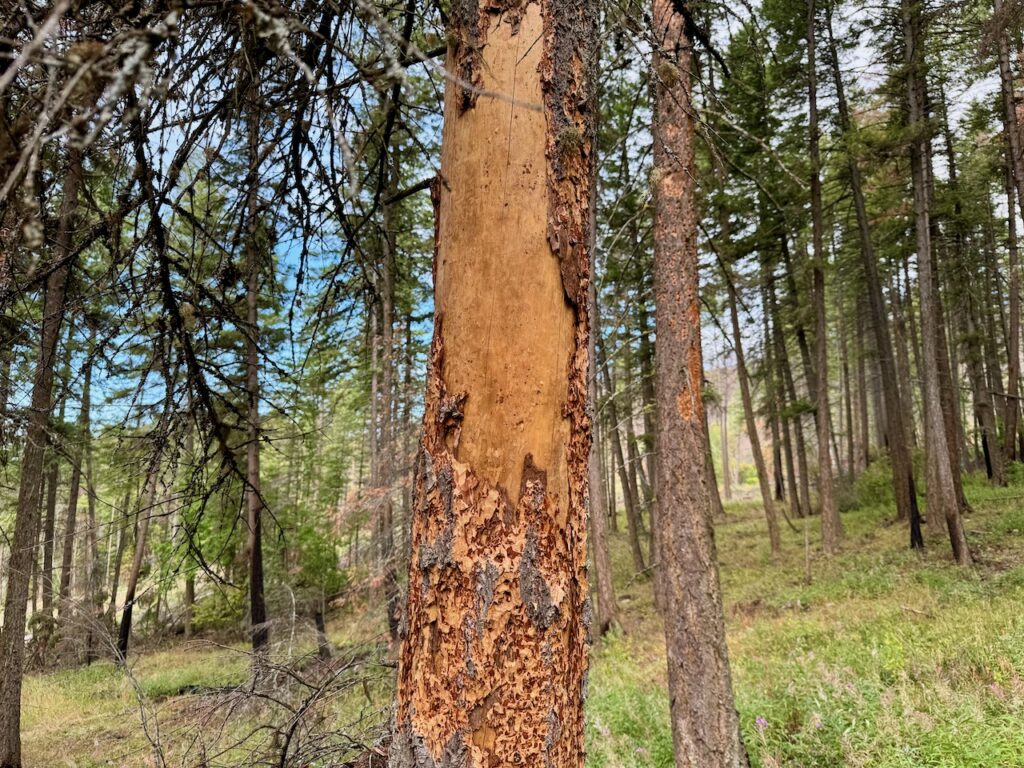
Lorraine and her colleagues believe that it is the increased stress from fires, heat, drought and root-rot that is enabling the wood borers to attack live trees. It is easy to spot the results, as woodpeckers are quick to move in and chip off the bark to eat the large woodborer larvae. Trees killed by wood borers are more difficult to salvage, because of the holes in the wood that can end up in the lumber.
Every few weeks Lorraine visits the traps to collect the insects, which are then frozen to be examined and identified at a later date. A good haul is from 40 to 50 insects per trap. There are three types of woodborers, Buprestidae (flat-headed, or short-horned), Cerambycidae (round-headed, or longhorned) and Siricidae (horntails or wood wasps) and the majority of beetles collected to date have been the longhorn beetles.

While there were only 1,702 hectares of forests impacted by woodborers last year in the Okanagan Timber Supply Area, this issue is concerning because it means that there is now another forest health issue that has resulted from the rapidly warming climate. After forest fires, the impacts continue, as the trees that were spared become more vulnerable to insects and disease. Our future looks increasing uncertain, as we are already having to cope with rising temperatures and more extreme weather events as well as these corresponding changes to ecosystem functioning.
POSTSCRIPT
Wood boring beetle damage is increasing in Shuswap’s forests, including at Skimikin Lake. Recently, a popular park, Pileated Woods, was closed in Salmon Arm because there are so many dead trees that have been attacked by beetles (see 178 trees identified for removal in Salmon Arm park/trail system). As the number and size of wildfires increase, there will be more damaged forests that although not killed, but blackened nonetheless and these stressed trees have a great chance of being killed by the beetles.
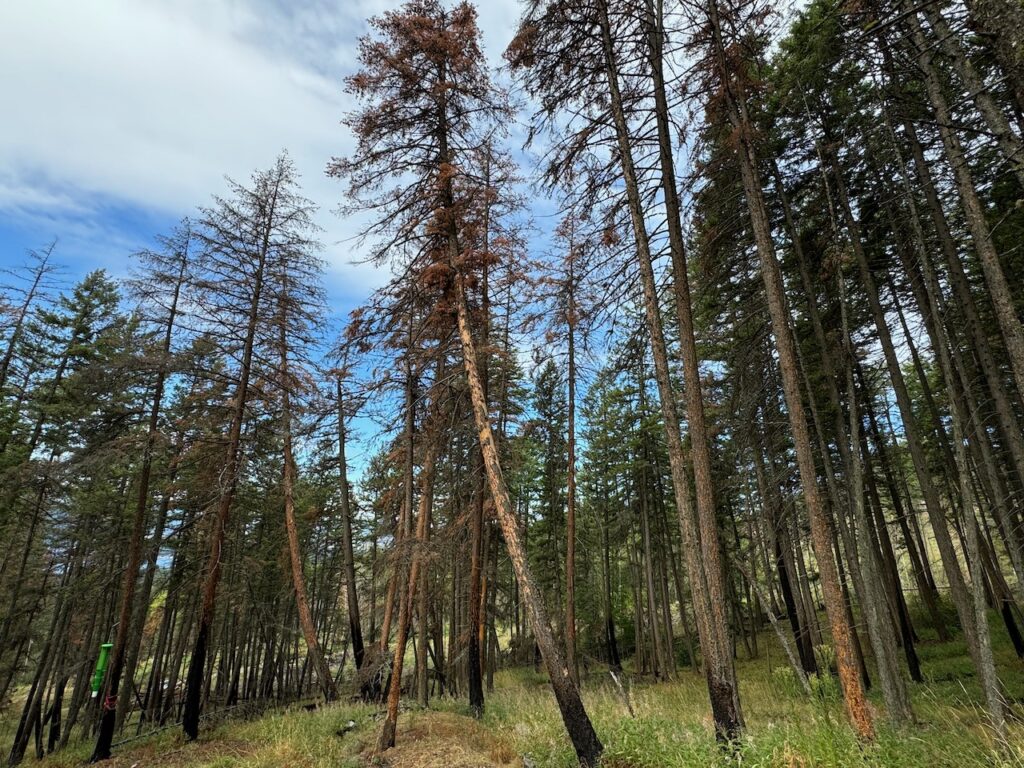
Although the area of forests hit by wood boring beetles is increasing, it still represents a small percentage of the overall forest area damaged by fires, drought, and other beetles as this graph illustrates:

Here are photos of the other types of wood boring beetles, courtesy of Lorraine Mclauchlan:
